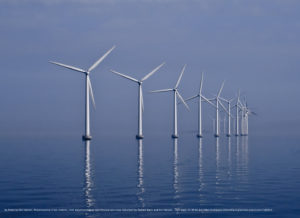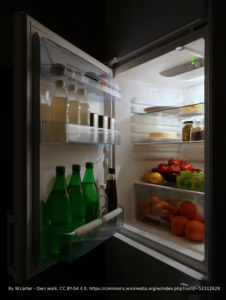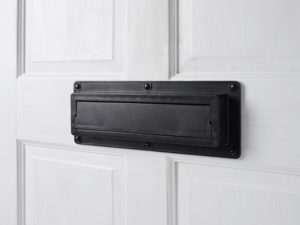
UK Renewables
Welcome to UK Renewables: The Energy Efficiency Podcast, episode 1, the podcast that brings you a mix of energy efficiency news, products and tips all year round. We’re interested in profiling people and products involved in promoting energy efficiency habits, products and information, so please do get in touch if you have something to contribute.
UK Renewables

At the end of May the UK press was widely trumpeting the fact that Britain (without Northern Ireland) had managed to power itself for two weeks without burning any coal. Since April the periods without burning any coal had lengthened, from 90 hours, to a week, to two weeks. At the same time, on one day a quarter of Britain’s needs was met by UK renewables in the form of solar energy alone.
Renewable UK, the renewable energy trade association, states that half of UK renewables comes from wind power, something in which the UK has been a pioneer and which continues to grow.
Other fuels
It’s important to bear in mind that not all non-coal power comes from UK renewables. Nuclear and gas play a part. It’s also the case that some of Britain’s coal-fired power stations were always on their way out. They are outdated and/or fail to meet European regulations on acid rain.
The government has done something to support solar and wind installation through subsidies, but it’s carbon pricing that has really seen gas become more attractive than coal as it emits less carbon. This merely swaps one fossil fuel for another. Switching from a position of using 100% coal for power production to 100% UK renewables was always going to be a circuitous journey.
Julian Leslie of National Grid Electricity System Operator – NGESO – expects these runs of non-coal power to become the new normal as UK renewables source infrastructure increases. Julian Leslie believes that by 2025 we will be able to fully operate Great Britain’s electricity system with zero carbon. This requires a significant boost to renewable energy production. With seven of the UK’s eight nuclear power plants stopping energy production in the next 11 years and only one new plant due into operation, emissions could begin to rise without sufficient renewable energy ready to fill the gap.
This is a business operation as much as an engineering challenge. Investment is essential. Third-party services must be identified and secured. If your company is in the offshore wind industry, you might be interested in the Global Offshore Wind conference in Manchester on the 19th-20th June. You can find out more about that at events.renewableuk.com
Energy efficient appliances

Energy is precious and usually expensive. You don’t want to waste the energy you pay for. There are all sorts of ways to save energy in the home and we’ll be talking about as many as we can in coming episodes, but one that we all face from time to time is replacing an energy-hungry appliance such as a fridge or a washing machine.
According to choose.co.uk the UK spends almost £3.5bn on electricity each year just to keep our clothes clean, wash our dishes and freeze our food. The worst offenders include electric immersion heaters, fires and showers, the dishwasher and it won’t surprise you to hear, the tumble drier.
These items and the other household items we rely on such as boilers and freezers take a great deal of water and energy to produce in the first place, so consider carefully just what it is you’re wanting to achieve – is it lower household bills through running more energy efficient appliances, or reducing your overall consumption of raw materials by using an appliance until it’s beyond repair? The energy efficiency of household items has improved in leaps and bounds in the last few years so there are great energy savings to be made. If the time has finally come to replace an item, what do you look out for, and who do you trust?
Information

The Energy Saving Trust is a good starting point. It’s a source of objective information but it also endorses products – including our now-discontinued letter box draught excluder the Ecoflap. A quick glance at its website provides food for thought including the excellent advice to consider the size of appliance you need. One person on their own is unlikely to need to same capacity fridge or washing machine as a family of six. Energy rating is dependent on size: two fridges with the same rating but that are different sizes will have different running costs. It also includes information on how to run your household goods efficiently plus how to dispose of the old ones.
Good habits
Interestingly it seems we pay far more attention to the energy rating of the ‘workhorse’ items such as white goods when we’re looking to buy than we do to consumer electronics such as a TV. We then tend to leave these items on stand-by, which racks up power usage and therefore bills. Whether it’s the financial hit, the environmental impact or both that bother you, it’s worth getting into a few good habits. Some gadgets don’t like being switched on and off too much, it can cause its own problems, but unless your life is run by the microwave clock it’s not going to be much hassle to turn the microwave off at the wall when you’re not using it. Power down your PC overnight or when you’re out for the day, same for the TV. You could save around £30 a year, depending on your personal set-up.
Small energy suppliers going bust
At least eight small energy suppliers have gone bust in the last couple of years, with One Select the latest casualty. What’s behind this slew of failures, and what happens when your energy supplier ceases trading?
Ofgem
 Answering that last question first, Ofgem steps in when a supplier goes under. Ofgem will ensure your energy supply continues, that any credit balance is protected, and will allocate you a new supplier. Ofgem’s advise is to “sit tight and don’t switch supplier”.
Answering that last question first, Ofgem steps in when a supplier goes under. Ofgem will ensure your energy supply continues, that any credit balance is protected, and will allocate you a new supplier. Ofgem’s advise is to “sit tight and don’t switch supplier”.
Turbulent sector
The energy sector has been turbulent over the last couple of years. This is partly due to tightened regulation and a government-enforced price cap on some tariffs. They are designed to remove overcharging and profiteering. Ofgem expects this energy cap to save customers between £75-120, depending on their plan. The price cap level will be updated in April and October every year to reflect the latest estimated costs of supplying electricity and gas, including wholesale energy costs.
New suppliers
Ofgem has tightened its rules for new energy suppliers entering the market. They must prove adequate financial resources but also crucially that they can meet customer service obligations. Consumers have been angry over rising bills and poor customer service. Perhaps this is why April this year saw a record number of customers switch to a new supplier. The overwhelming majority switched away from the big six to small and medium companies despite the collapses. This process seems not to be smooth however. Complaints about the switching process just overtake comnplaints about other aspects of customer service. Ofgem is clearly taking customer service capabilities seriously. It banned one provider from taking on new customers until it had sorted out its problems.
In the event of a problem the Energy Ombudsman can step in to mediate and to date has solved nearly 100,000 cases. The most common complaint is misbilling. Smart meters should help with this – something we’ll be talking about soon – but roll-out is far from complete and mistakes can still happen.
Lack of information is a common cry with bills, with some customers experiencing changes to their Direct Debit without the requisite notice period, or bills simply not appearing. Of course prices go up too, but suppliers should give customers 30 days notice of any rises. On a fixed tariff the price can increase only if the government increases VAT. The notice period for a fixed tariff is 42-49 days, giving customers time to find a new deal without exit fees. If a customer finds themselves struggling to pay their bill Ofgem’s advice is to talk to the supplier as quickly as possible to work out an affordable plan. There is plenty of information available online about energy supply, your rights and what to do if there’s an issue.
Home draughtproofing
If we’re lucky enough to have decent summer weather in the UK, it’s easy to forget about draughtproofing. It doesn’t feel important when the weather’s warm and no-one’s noticing the draughts creeping under doors and through poorly-fitting windows. However this is to miss an opportunity to make improvements, literally fixing the roof while the sun shines. These steps can be large, such as fitting a new boiler or having other central heating improvements made while you’re unlikely to be needing the heating on, or small, depending on your set-up and your budget.

We want to feature energy saving household products on this pod, and we’re starting with the Chimney Sheep. This is the classic bright idea – simple but effective and you wonder why you didn’t think it up yourself. Essentially the Chimney Sheep is a chimney blocker made of 100% Herdwick wool. It’s inserted into the chimney (when the fire isn’t being used) to prevent draughts, birds nests and so on whistling down the chimney.
Chimneys draw air through them all the time, whether the fire is lit or not, creating draughts. Fitting a Chimney Sheep interrupts this air flow but allows a chimney to breathe. Like our products, it helps to keep warm air in during the winter, and cooled air in during the summer, and offers a bespoke option. The Chimney Sheep starts from £16. The Chimney Sheep includes some impressive statistics on carbon saving and bill reduction, so visit them at chimneysheep.co.uk to find out more about this innovative product and buy one to tuck up the chimney over the summer months.
What are we up to? We’re a family firm designing and manufacturing draughtproofing products for the home. Right now we’re developing a new piece of kit for shaping trunking, and relocating some of our operations from one base to another. We’re also designing the manufacturing of the Letterplate Eco, the new external letterbox draught excluder that will replace the Ecoflap. When he heard about the new podcast our lead designer, Richard, leapt in with a tip of the day, so here it is.
Richard’s tip of the week
Fit a small ledge above your thermostat to change the movement of air around it. This will provide a more accurate temperature reading. Warm air rises then cools as it comes into contact with walls and the ceiling. This cooled air, which is cooler than the air in the middle of the room, falls back down the walls and on to the thermostat. It will give the thermostat the impression that the room is colder than it really is. This can cause your heating to come on when you don’t want it to, using excess energy and increasing your bills. There are plenty more of Richard’s tips where that came from, so we will aim to bring you one every week!
Thank you for listening. Search for Ecoflap on Twitter and Instagram to keep up with us until next time, when we’ll be looking at EnerPHit and passivhaus, smart meters and community projects.
“Werq” Kevin MacLeod (incompetech.com)
Licensed under Creative Commons: By Attribution 3.0 License
http://creativecommons.org/licenses/by/3.0/
